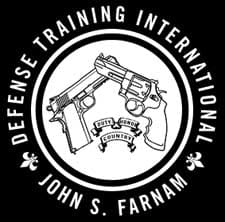By John Farnam
In my recent post I talked about Negligent Discharge vs Unintentional Discharge, now Larry Mudgett: gives us his take on Accidental Discharge .


Ft Collins, CO –-(Ammoland.com)- More refinement of terms, from my friend and colleague, and a giant in our Art, Larry Mudgett:
“When none of our ‘Four Universal Safety Rules’ were involved in the errant discharge in question, it is correctly described as an ‘accident,’ or ‘ accidental discharge.’” It is not the result of negligence on the part of the shooter.
On the contrary, when the errant discharge in question was preceded by a clear violation of one of our Four Universal Safety Rules, it was ‘negligent’
Since both of these events are sometimes described as ‘accidents,’ we must carefully distinguish between the two.
Both are correctly referred to as ‘unintentional discharges,’ or ‘UDs’
Thus, there are then two kinds of UDs:
1) ‘Accidental Discharge,’ or ADs and
2) ‘Negligent Discharge,’ or NDs
These are the terms I came up with for LAPD, and they worked out fairly. When you violated one of our Four Rules, and that violation directly resulted in an unintentional discharge and/or an unintentional hit, you received some form of censure, along with re-training.
Conversely, when the event occurred through some mechanical failure, or other cause not related to the violation of our Four Rules, you were not penalized.
Our System worked well and was fair, but as you might imagine, most errant discharges, and the easiest ones to resolve, occur on our training range. Those occurring in the field, particularly under tactical circumstances, are much more difficult to settle.
In the field, ‘good outcomes’ don’t necessarily mean we’re all saints, nor do ‘bad outcomes’ necessarily indicate that someone was negligent.”
Accidental Discharge My comment:
Not much to add, but I should note, as I have before, that legitimate Accidental Discharge’s (AD) are extremely rare. The vast majority of UDs are NDs!
And, the foregoing is still not “absolute.” There will be exigent circumstances where a violation of one of our Four Rules may be unavoidable, and thus not necessarily negligent, such as when a marksman must shoot a felon out from behind a hostage. Active gunfighting continually challenges our imaginations and acumen, so no degree of adherence to a set of “rules,” no matter how well written, will ever absolve us from sound judgement and courageous, thoughtful analysis!
Whenever I’m asked to assist an attorney involved in a shooting case, I’m invariably required to inspect the gun in question and render an opinion with regard to its serviceability. In every case in which I’ve been involved (in over fifty years), the gun in question is “serviceable, and within factory specifications.”
That is, it is not broken, nor subsequently “ modified” in some way that would make it “implicitly unsafe.”
Of course, some attorneys insist that the design itself of some guns is “inherently unsafe,” because they come without certain features (like a manual safety lever or button). Most of these cases are civil suits against the gun manufacturer itself, and I’ve never seen one involving a major manufacturer that has any merit. Just sleazy, amoral lawyers along with sleazy, amoral (and stupid) clients, looking for early retirement!
Again, “safe” gun-handling is probably impossible, but “careful” and “correct” gun-handling, as defined by our Four Rules of Gun Safety, is.
For those unfamiliar, here are The Four Rules of Gun Safety:
1) Treat all guns as always loaded
2) Keep the muzzle of the gun you’re handling continuously pointed in a relatively safe, or otherwise appropriate, direction.
3) Keep fingers out of contact with the trigger, and out of the trigger guard, unless and until (1) your sights are on target, and (2) you intend for the gun to fire immediately.
4) Be sure of your target and the area behind it.
Yet, like the Ten Commandments, our Four Rules, sound as they are, will still require sensible, levelheaded interpretation as they are applied to each new situation.
There are precious few “absolutes” No rule nor law, no matter how cleverly written, is fair to all people, at all times. Our Art continually moves forward, and we practitioners must never find ourselves victims of rigor mortis!
“Just when we think we’re arrived at the ‘ultimate solution,’ we discover that, as our telescope improves, more stars appear!” ~ Julian Barnes
/John
About John Farnam & Defense Training International, Inc
As a defensive weapons and tactics instructor John Farnam will urge you, based on your own beliefs, to make up your mind in advance as to what you would do when faced with an imminent and unlawful lethal threat. You should, of course, also decide what preparations you should make in advance, if any. Defense Training International wants to make sure that their students fully understand the physical, legal, psychological, and societal consequences of their actions or inactions.
It is our duty to make you aware of certain unpleasant physical realities intrinsic to the Planet Earth. Mr Farnam is happy to be your counselor and advisor. Visit: www.defense-training.com







One of the 4 basic firearm safety rules does not have to be violated for there to be a negligent discharge. Firearm malfunction due to worn parts, worn holster are in fact a negligent circumstance. Clothing or accessories that may cause a firearm to discharge is also negligence on the part of the operator. The four basic firearm safety rules are only designed to mitigate negligent discharges and to mitigate the damaged caused by them. We are humans and will make mistakes, but just because we did not mean for it to happen or did not know better does not… Read more »
“Author: Matt Comment: Maybe send it to the manufacturer for a thorough once over? No way they wouldn’t look at a weapon that discharged like that. Just a thought.” Matt, believe me I took it down to parade rest and checked every part nothing showed any signs of damage, you know like out of round or being bent in any way. I thought maybe the firing pin was bent or sticking but found absolutely nothing. It has not happened since but you know that just sits in the back of your mind. IT HAPPENED. and now the worry. So sending… Read more »
I am not seeing all the posts soo. “Author: Stupid Comment: What would this be classified as? Be truthful, your can’t say anything I have said to myself. I was taking dinner weapons into a shop to put on consignment. I have a good relationship with the staff, so we started talking about the Sig that I DIDN’T want to sell. I was raving about the ergos of the weapon, the owner said that he’d never held this particular weapon before. Me, wanting him to do so, opened the Sig storage box, picked up the weapon, tracked it, aimed away… Read more »
I follow the “Gunsite Rules:
1, ALL guns are always loaded
2. Never let the muzzle cover anything which you are not willing to destroy
3. Keep your finger off the trigger until your sights are on the target
4. Always be sure of your target
My definitions:
There are only three ways a gun can fire:
1. Deliberately
2. Defective
3. Negligence (not used as a legal term)
“Author: Stupid
Comment:
Why not send it to the manufacturer for a once over? I bet if you explained, they would really give it a good look. I don’t think a manufacturer wants their name on a weapon that discharges without explanation. Just a thought for your piece of mind.”
Now that does not sound stupid at all and I have thought about that. I wonder how BERSA deals with that process.
I am also a gunsmith but admit there are things I can learn.
What would this be classified as? Be truthful, your can’t say anything I have said to myself. I was taking dinner weapons into a shop to put on consignment. I have a good relationship with the staff, so we started talking about the Sig that I DIDN’T want to sell. I was raving about the ergos of the weapon, the owner said that he’d never held this particular weapon before. Me, wanting him to do so, opened the Sig storage box, picked up the weapon, tracked it, aimed away from everything and squeezed the trigger. Boom! Right through the top… Read more »